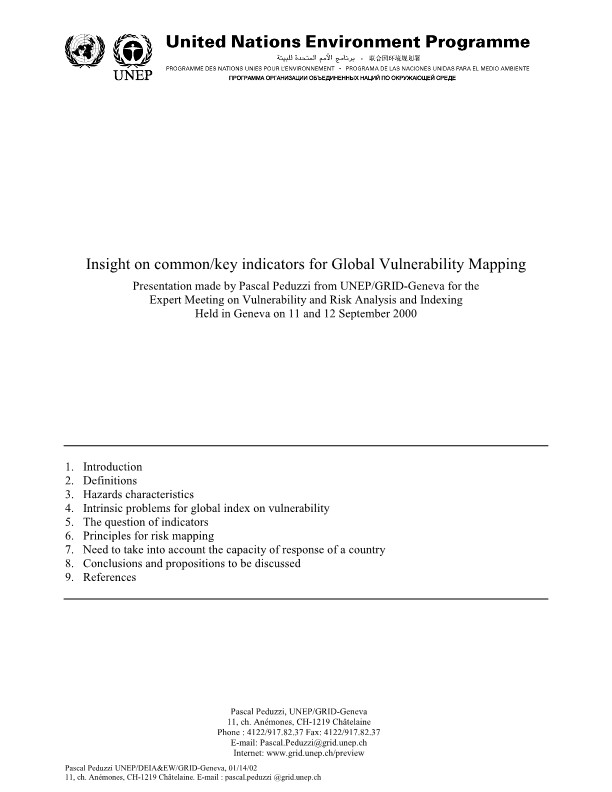Resource
Insight on common/key indicators for Global Vulnerability Mapping
Description
With growing infrastructures complexity, the world population is facing increasing environmental risks such as water, air and soil contamination due to organic, chemical or nuclear wastes and accidents. Human activities pressures natural habitat through agriculture’s practices and forest fires, leading to biodiversity losses. The vegetation removal increases the risks of extended floods and soil erosion occurrence. Adding to these human induced threats, natural hazards such as volcanic eruptions, cyclones, floods and earthquakes are causing more and more victims due to higher population densities. In order to prioritise the populations that are facing higher threats, maps showing risks could be a useful tool for decision makers. Whereas for a selected hazard mapping is easy to achieve at a local scale, the question is much more complex and controversial, if we speak of multiple hazards at a global scale. Some elements of discussion and approaches will be discussed in this presentation.